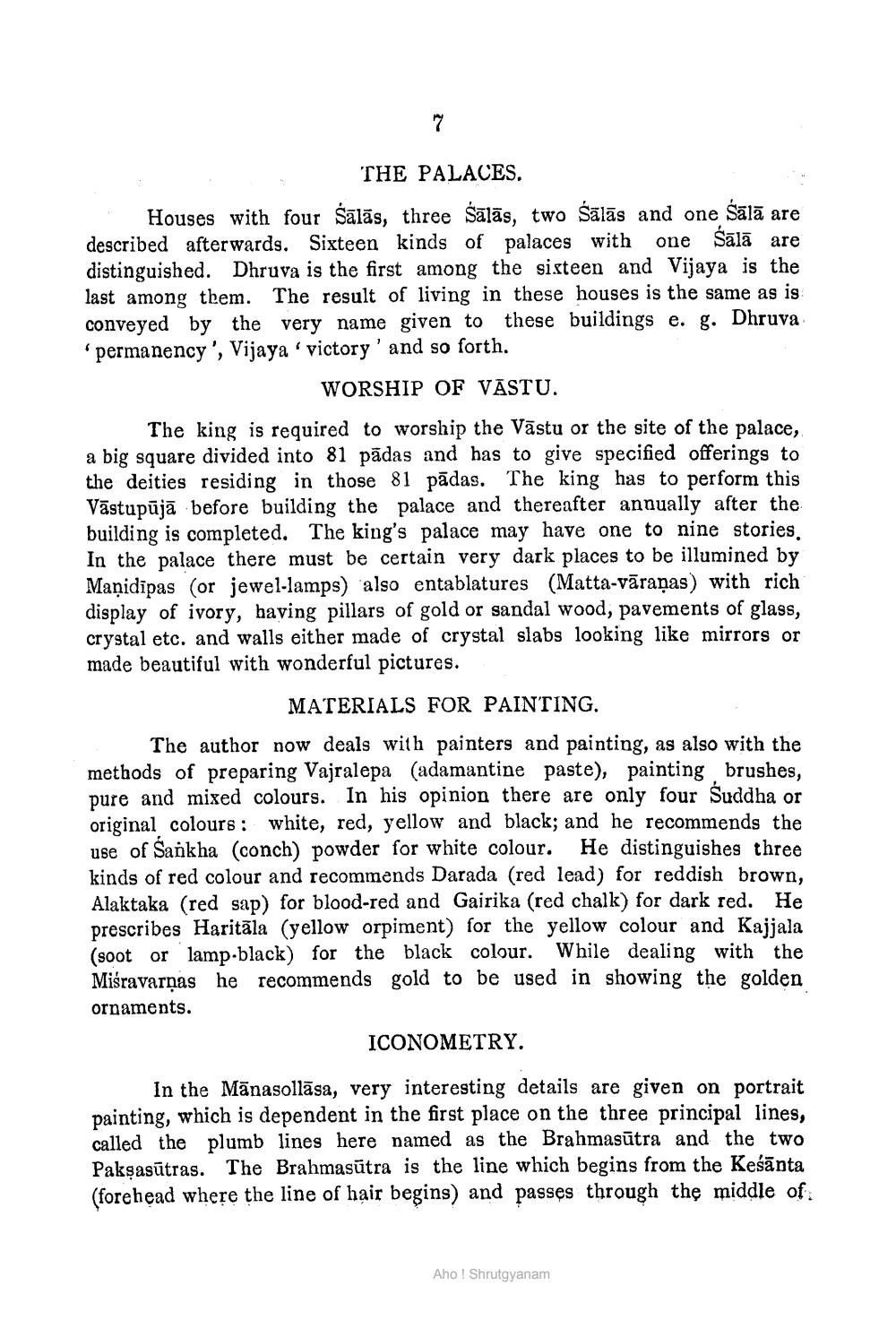________________
7
THE PALACES.
Houses with four Salas, three Salas, two Śālās and one Śālā are described afterwards. Sixteen kinds of palaces with one Śālā are distinguished. Dhruva is the first among the sixteen and Vijaya is the last among them. The result of living in these houses is the same as is conveyed by the very name given to these buildings e. g. Dhruva 'permanency', Vijaya 'victory' and so forth.
WORSHIP OF VASTU.
The king is required to worship the Vastu or the site of the palace, a big square divided into 81 padas and has to give specified offerings to the deities residing in those 81 pādas. The king has to perform this Vastupūjā before building the palace and thereafter annually after the building is completed. The king's palace may have one to nine stories. In the palace there must be certain very dark places to be illumined by Manidipas (or jewel-lamps) also entablatures (Matta-varanas) with rich display of ivory, having pillars of gold or sandal wood, pavements of glass, crystal etc. and walls either made of crystal slabs looking like mirrors or made beautiful with wonderful pictures.
MATERIALS FOR PAINTING.
The author now deals with painters and painting, as also with the methods of preparing Vajralepa (adamantine paste), painting, brushes, pure and mixed colours. In his opinion there are only four Suddha or original colours: white, red, yellow and black; and he recommends the use of Sankha (conch) powder for white colour. He distinguishes three
kinds of red colour and recommends Darada (red lead) for reddish brown, Alaktaka (red sap) for blood-red and Gairika (red chalk) for dark red. He prescribes Haritala (yellow orpiment) for the yellow colour and Kajjala (soot or lamp-black) for the black colour. While dealing with the Miśravarnas he recommends gold to be used in showing the golden
ornaments.
ICONOMETRY.
In the Mānasollasa, very interesting details are given on portrait painting, which is dependent in the first place on the three principal lines, called the plumb lines here named as the Brahmasutra and the two Pakṣasutras. The Brahmasutra is the line which begins from the Keśanta (forehead where the line of hair begins) and passes through the middle of
Aho! Shrutgyanam




